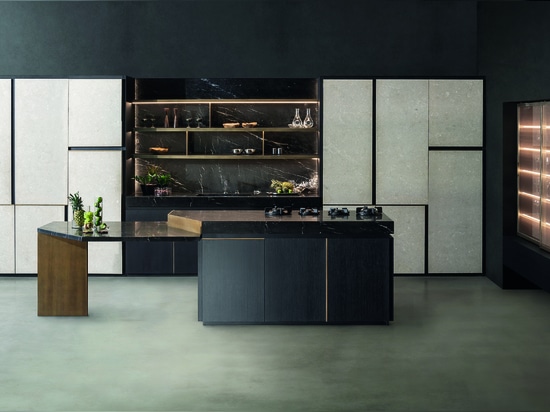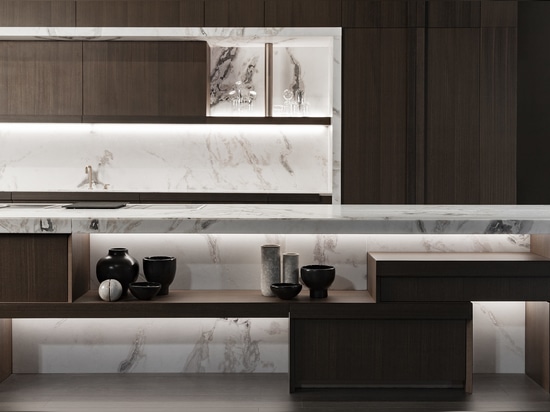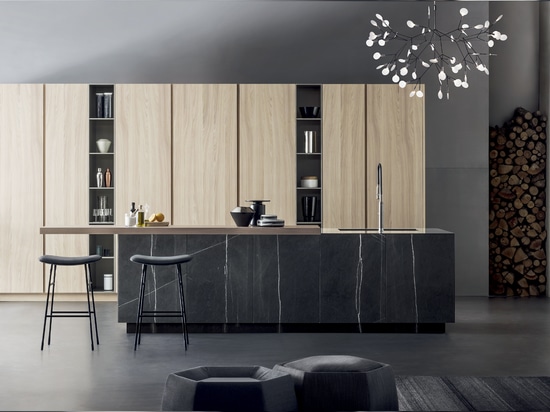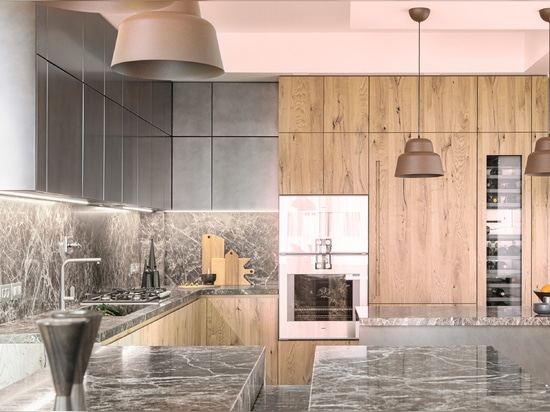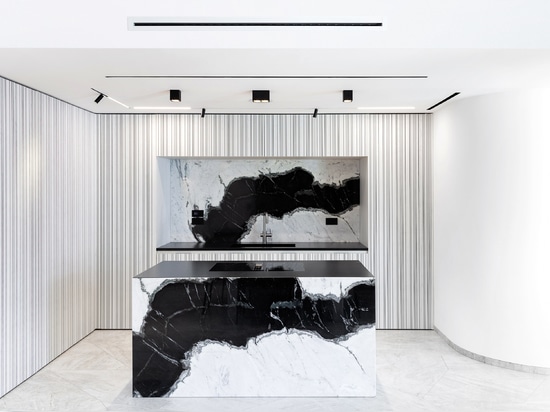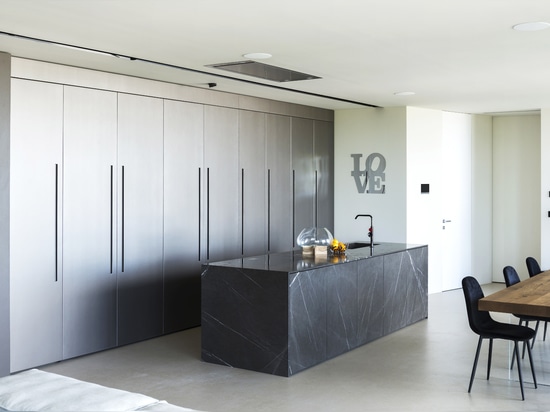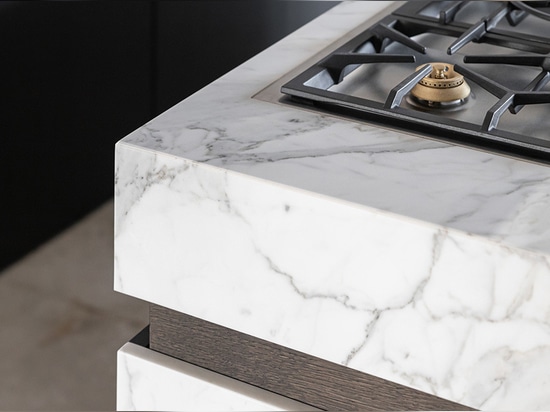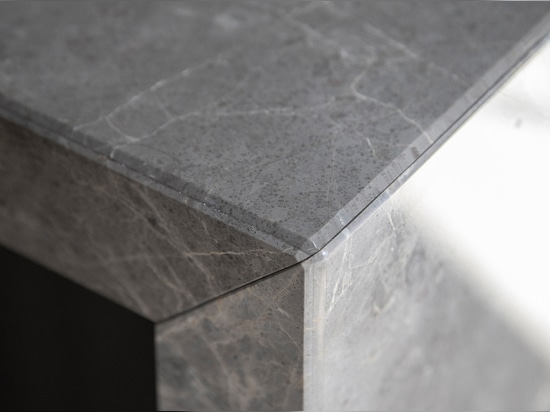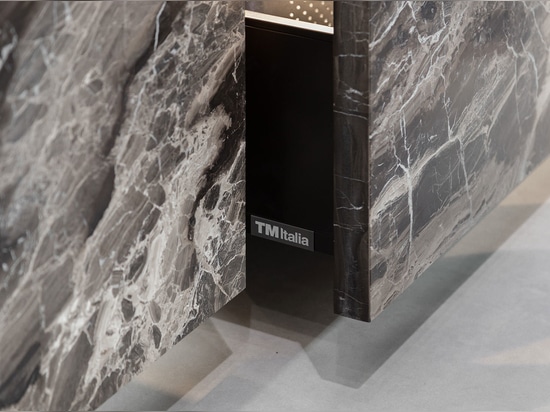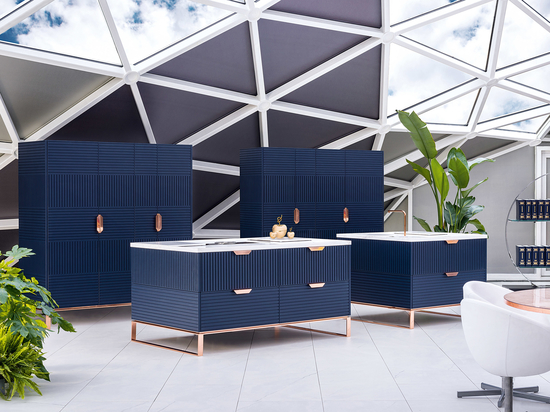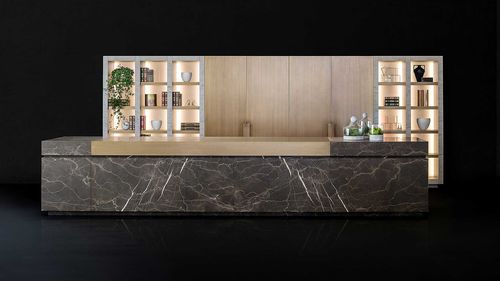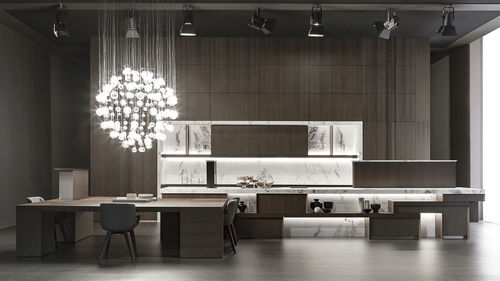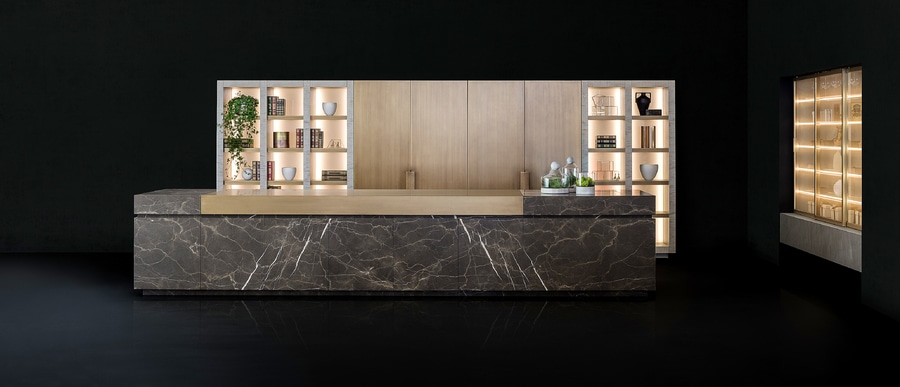
#Product Trends
Stone kitchens
Types and characteristics of stones used in kitchen projects and technologies applied in the creation of stone kitchens.
Each rock, be it stone, marble, granite, travertine, has its own story to tell. Each of them comes from distant past, from millions of years ago and derives from profound geological transformations of the planet Earth. That is why these natural materials exude an extraordinary charm and must be used and treated with great respect and awareness. Each has its own characteristics, be it chemical, morphological, tactile, making it unique.
According to the official nomenclature, stone is technically “non-polishable building rock” unlike marble, granite and travertine which are “polishable”.
It is the chemical composition and the transformation process that distinguish them one from another, taking place due to changes in pressure and temperature over millions of years.
Extracted from various types of rocks of the earth’s crust, the stone materials present an almost infinite variety of colours, deriving from the presence of minerals, and veins resulting from impurities such as sand, iron, clay. All of them have a more or less high level of porosity.
This means that these materials require particular attention and care in use and cleaning, especially when they are protagonists in kitchens.
Therefore, acidic foods (lemon, vinegar), those that release colour (some vegetables, coffee, tea), and abrasive substances are banned. TM Italia applies waterproofing treatment to all stone surfaces which gives the surface protection from water and oil without altering its colour.
It is also possible to apply an anti-stain treatment, the main function of which is to prevent staining agents and acids (lemon, red wine, coffee, etc.) from penetrating the pores of the stone, making it possible to remove them quickly and easily. This treatment improves the resistance of the surfaces but it is still necessary to ensure that staining substances are not left in contact with the stone surfaces for a long time.
Table of Contents
Marble, granite and travertine for kitchens in stone
Doors in stone thanks to aeronautical technology
Worktop in stone
Stone kitchens with home automation elements
Stain-resistant treatment for stone kitchens
Matching stone with other materials
Marble, granite and travertine for kitchens in stone
Marble has its own peculiar characteristics: it is resistant to impacts and abrasions, durable over time. On the other hand, it is a porous and not waterproof material. Instead, the granular and crystalline structure of granite makes it extremely hard and resistant, unlike travertine which is a robust and docile material with a high porosity.
Each of them can be further ennobled and customized not only thanks to processes such as: sanding, polishing, bush hammering, sandblasting, flaming, but also thanks to a wide range of sophisticated finishes: leather, etching, brushing, antiquing and others.
Doors in stone thanks to aeronautical technology
Applications in the kitchen are limited only by the designer’s imagination and creativity. For years TM Italia has been experimenting with these materials by carefully selecting them thanks to collaborations with the main companies in the sector. Petra, for example, was the first kitchen in which the company used travertine from its own territory: Ascoli Piceno.
TM Italia presents in its collection of finishes 29 stones and marbles and 20 types of quartz (composite materials). The company offers its customers the opportunity to choose other types of marble and stone not present in the catalogue to meet the needs of extreme customization.
Read more:
